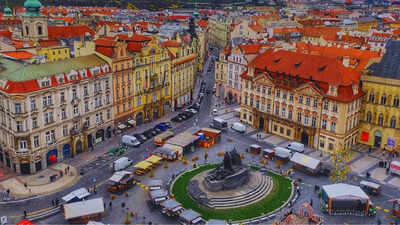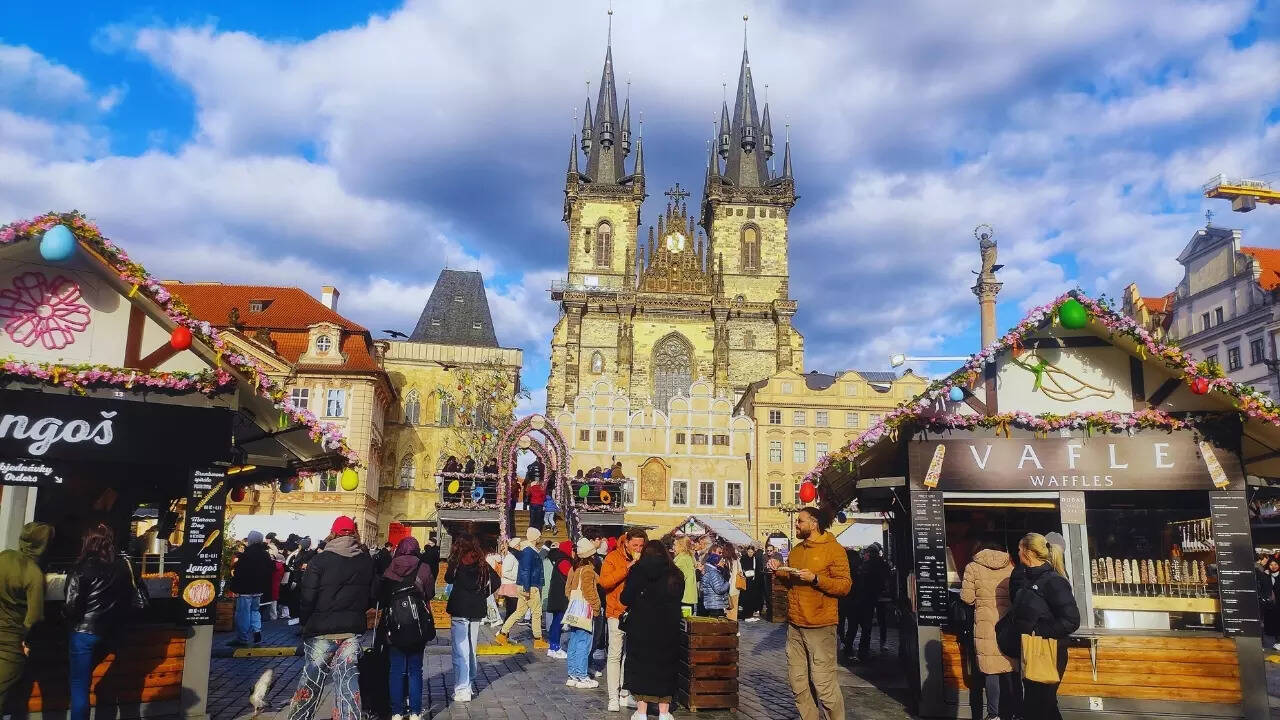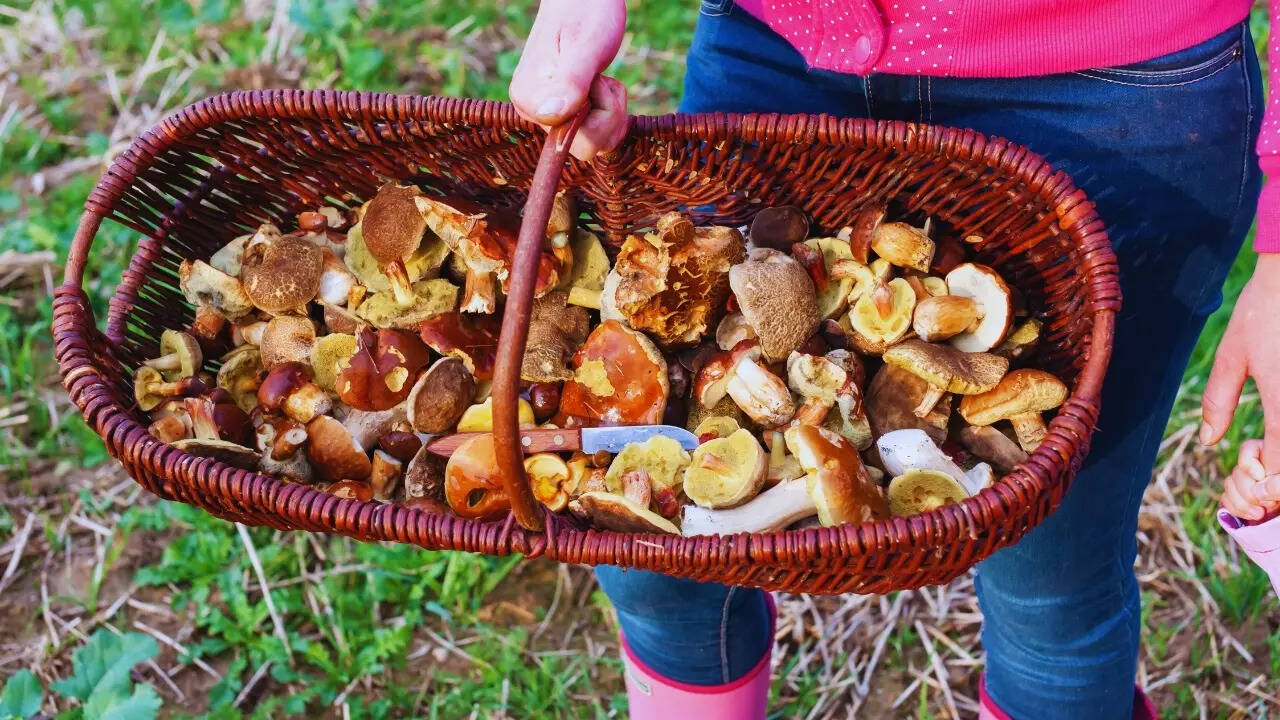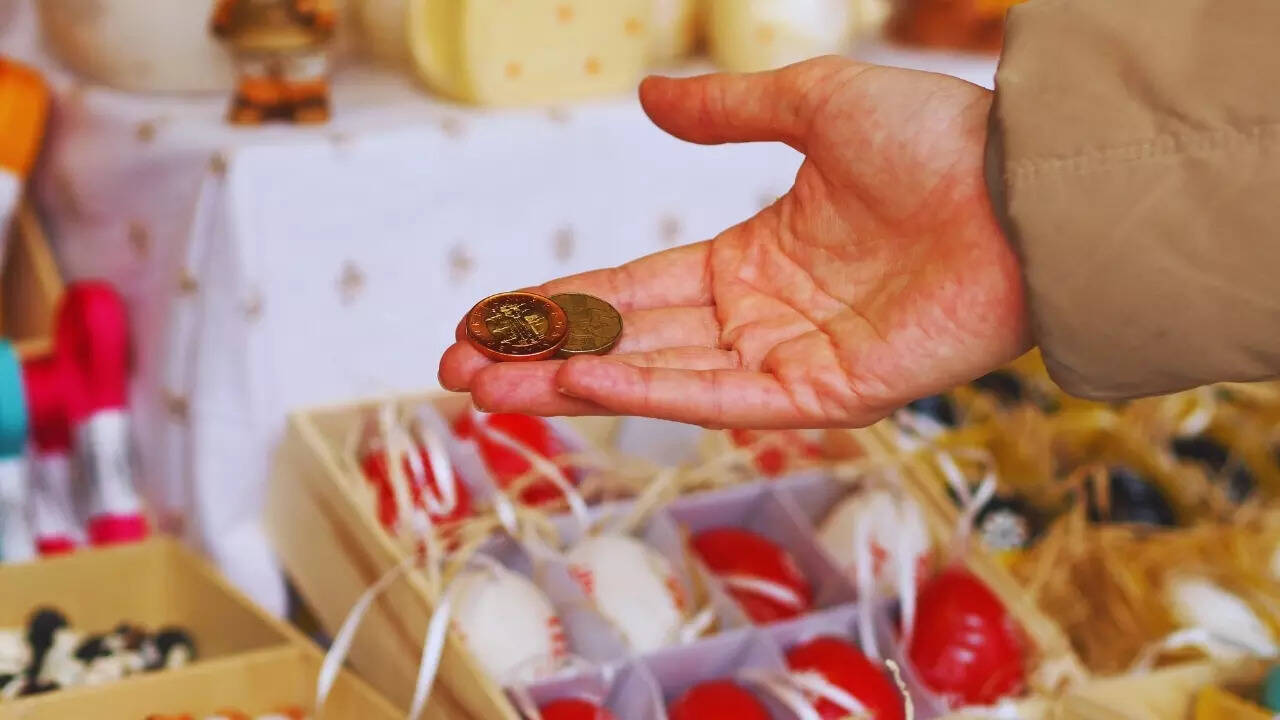ARTICLE AD BOX

Czech Republic or Czechia, a country situated in Eastern Europe is a perfect destination for travellers who are looking for off-the-beaten-path destinations with affordable European glamour, lots of culture, inspiring architecture, enchanting history, dramatic landscape and charming character.
Prague, one of the most cultured cities, nicknamed the “City of 100 spires”, is a page straight from a fairy-tale book. Even beyond Prague, everything is pretty and picturesque about this country but there is so much to its character that no one emphasizes on. Most of the travellers still don’t know what to expect from this Bohemian country despite its relaxed atmosphere, countless historic sites, gorgeous trails, sprawling panoramic views and comforting food.
A couple of years ago, when I visited Prague, I indulged in the city’s standout experiences – from its breathtaking attractions to tell tales of centuries past, but I made the same mistake as others- of not daring to challenge the usual Czechia itinerary. Thus, I missed some really unique experiences and fun facts that could have added more colour to my trip. However, I redeemed myself this year. From diving in its panoramic views to strolling in its narrow alleys and indulging in its culture-rich experiences to interacting with a lot of locals, I discovered the magical side of the country.
I travelled near and far from Prague and visited some of its most beautiful chateaus and summer houses. And while I was spending time in nature, I also learned that the country has the world's densest (and best-marked) hiking trail network with almost 25,000 miles of footpaths.
I learned about cubism and the things that Czech inventors have given us. Here are 10 quintessential facts that will make you more curious about Czechia. Read on– you’re in good hands!

The magical fairytale castles are for real
Czechia allures with its history and heritage. The country has the highest number of castles in Europe, the largest one and is a treasure trove of UNESCO World Heritage Sites.
So when it comes to dreamy, feisty and rebellious castles, keeps, ruins, chateaux, fortresses, and romantic summer palaces, Czechia has one of the highest densities of castles per square mile in the world, with more than 2000 in number. Lednice Castle, originally a Renaissance villa, is definitely one of the most beautiful palaces in the Czech.
Bouzov in the Moravia region built in the 13th century has been popularly showcased in Czech films and movies. To be enthralled with one of most beautiful examples of the Renaissance style in Bohemia, one has to visit Litomyšl Château, also recognized by UNESCO. If you would like to see a Moravian Disney château, do not miss Hradec and Moravici. And then there is much-talked about Karlštejn Castle which boasts of the royal treasures, collections of saint relics and the crown jewels. Not to forget, I am always mesmerized by Prague Castle and never forget telling my friends how I fell in love with Hluboka Castle and Český Krumlov Castle during my visit to Cesky Krumlov. Did you know Prague Castle is officially the world’s largest ancient castle complex (according to Guinness World Records)?

Mushroom picking is a much-loved hobby
A large population of Czechs can be called 'mycologists’ –mushroom enthusiasts as well. I was surprised to learn that almost two-thirds of the population indulged in mushroom foraging at least once a year. How cool is this? This national pastime is a much-loved hobby of the young and old and the knowledge of particular species is often passed from one generation to another. It is a part of Czech tradition, where people search through the forest, enjoy nature, spend time with their families, and later clean it to prepare local dishes.
The mushrooms are mostly collected for personal use, and the deeply-rooted foraging tradition has taught them to differentiate between poisonous and perfect for consumption mushroom varieties. Tourists can also go mushroom picking but they must be accompanied by a mycologist. And one can also visit a “Mushroom Advice Centre” in Prague where visitors can bring mushrooms they have found to have them identified.
You must not miss the popular mushroom dishes like Houbový kuba (mushroom risotto), Žampionová polévka (mushroom soup), and Houbová smaženice (mushroom stir-fry).

Golden Lane is exclusive
Have you heard about the Golden Lane (Zlatá ulička) in Prague? Zlatnická ulička means Goldsmith's Lane. It is a tiny, vibrant street with 11 historic houses, steeped in legends and myths. It is believed that some of the most skilled artisans, who provided goods and services for the inhabitants of Prague Castle lived in these houses.
Several writers and artists have been fascinated with the mystical art of alchemy that was even practiced here.
There are many mystical stories about this lane. One of the legends goes that this lane was occupied by the goldsmiths who were housed here by Emperor Rudolf II and were commissioned to find a substance that could turn metal into gold. Later some of the famous writers and personalities also chose this lane as home.
Franz Kafka is known to have written some of his best works here, including the novel 'The Castle'. Nobel Laureate Jaroslav Seifert also lived in this lane.
Bata’s legacy is worth a see
I am sure we all know about the well-known shoe company Bata and many of us also know that it is not an Indian brand. When you are visiting the Czech Republic, do look out for the town of Zlin -the city where the most famous Czech shoe brand and an empire was set up by none other but Tomasz Bata and his siblings. Though now these shoes are manufactured outside Europe, one must visit the city to experience Tomáš Baťa’s indelible legacy. From buildings to streets to institutions that bear his name, the entrepreneur is everywhere in the architecture. Zlín’s Letná district, the so-called “Bata village”, has rows and rows of interesting red-brick houses. There is also a museum with footwear from various corners of the world and different eras.
Narrowest Street (less than 50 cm)
It is literally squeezed in between two buildings but you must look for this one. Vinárna Čertovka in the historic Malá Strana neighborhood is the narrowest street in Prague. Only one person can manage at one time. It is literally a road to nowhere but it has gained limelight in the last few years. It leads to a restaurant on the other side. To guide people through and prevent them from bumping into each other, the street also has traffic lights.
Isn’t it fun to know about this quirky street, right?
Cubism in architecture is unique to Czech Republic
Czech is home to some of the most popular architectural styles and the country is truly a photographer’s delight. You name it and you have it in Czech- from Gothic to Renaissance, Baroque, to Art Nouveau, Rondocubism to Modernist architecture and Arc Cubism to Czech Art Deco. I did know much about cubism until I visited Czech. The architectural style focuses on abstraction, geometrization, symbolism, distortion, and illusion.
Cubism was started around 1906 by Pablo Picasso in Paris and Georges Braque in Barcelona, soon followed by young architects but it found a unique identity in Czech. Czech visionaries took fondness for this new style and brought Cubism to their land. If you are visiting Prague, do not miss the “House of the Golden Grille,” the House of the Black Madonna, the most notable Cubist structure in the country. The history and design buffs must sign up for an expert tour that delves into the origins of the Art Nouveau, Rondocubism and Cubist movements in the country of architecture. The Lesser Town Square and Wenceslas Square are decked up by buildings drenched in art. Do you know Prague is home to the only Cubist lamppost in the world?

Quirky Easter (Velikonoce) traditions
Czech Easter traditions are associated with the onset of offspring and fertility.
There is a whipping tradition where men use soft twigs to whip the ladies and the females give them painted eggs, ribbons as rewards. Pomlázka (Willow Whip) is symbolic of Czech Easter. The decorated Easter eggs are called Kraslice. In some regions, water dousing is done instead of whipping. Men pour buckets of cold water on women which is believed to bring wellness for them.
Soft lenses, robot and sugar cubes all came from Czech inventors
Tennis players from Czech have always ruled our hearts but there are some more popular inventors who have given us useful things.
The renowned Czech chemist, Otto Wycherley is credited world over for doing some amazing work with modern soft contact lenses. He was a learned man, he tirelessly worked on several researches on lenses for many years but one day while he was stirring his coffee, the centrifugal force inspired him to try and produce the lenses in their current shape (bowl like).
After that further research became easy and he was unstoppable.
A Czech writer, Karel Čapek, used the word Robot for the first time and it was used to denote a fictional humanoid. He derived this word from the Czech word “robota” or forced labor. Czech’s Jacob Christoph Rad invented sugar cubes in 1841 and holds a patent. In Datschitz (a city at the southernmost tip of the Bohemian-Moravian Highlands), there is also a monument dedicated to sugar cube.This invention also has a very interesting story where he thought of cubes when his wife injured her finger while chopping off a piece of sugar loaf.
Wine wellness and beer spa
Okay, so which country does the world’s highest consumption of amber nectar? Czechia it is! There are two distinct regions in the country- Bohemia in the west and Moravia in the east of the country. The Czech beer is the best in the world but what is still not known is that its Moravia region produces exquisite wines. Vineyards tastings and boutique stays are a passé; Czechia has taken its tradition of hop cultivation to wellness and wine spas.
Beer baths and wine wellness are in vogue in the country. One can indulge in beer wellness at several spa centres. It is not necessary to drink beer, why not use it for regeneration of your skin and absolute mental and physical relaxation?
Traditional food
Smažený sýr or vyprážaný syr of fried cheese is loved in both the Czech and Slovak because once, it was Czechoslovakia. If you love garlic soup, this is the best place to indulge in Česnečka made with croutons, cheese, and sometimes ham or egg.
The Czech version of Hungarian goulash called Guláš (Goulash) is also a must-try. Roasted pork with bread dumplings and sauerkraut (Vepřo knedlo zelo) is a true Czech classic. Also, there is a notion that Trdelník – the sweet and much-loved chimney cake is one from the Czechs but it isn’t.
Though it is extremely popular in Prague, it comes originally from Slovakia/Hungary. Klobása, Nakládaný Hermelín, and Medovník are some local snacks and sweet treats to try. Sweet breads, cakes drenched in honey and nuts, chocolates, egg dishes and Easter Lamb (Beránek) take over the Easter and Christmas markets.About the author:Manjulika Pramod travels the world and tells compelling stories to make people pack their bags. She is also a compulsive foodie, an author, an upcycling artist and a telecom engineer.



.png)
.png)
.png)
















 4 hours ago
4
4 hours ago
4








 English (US) ·
English (US) ·